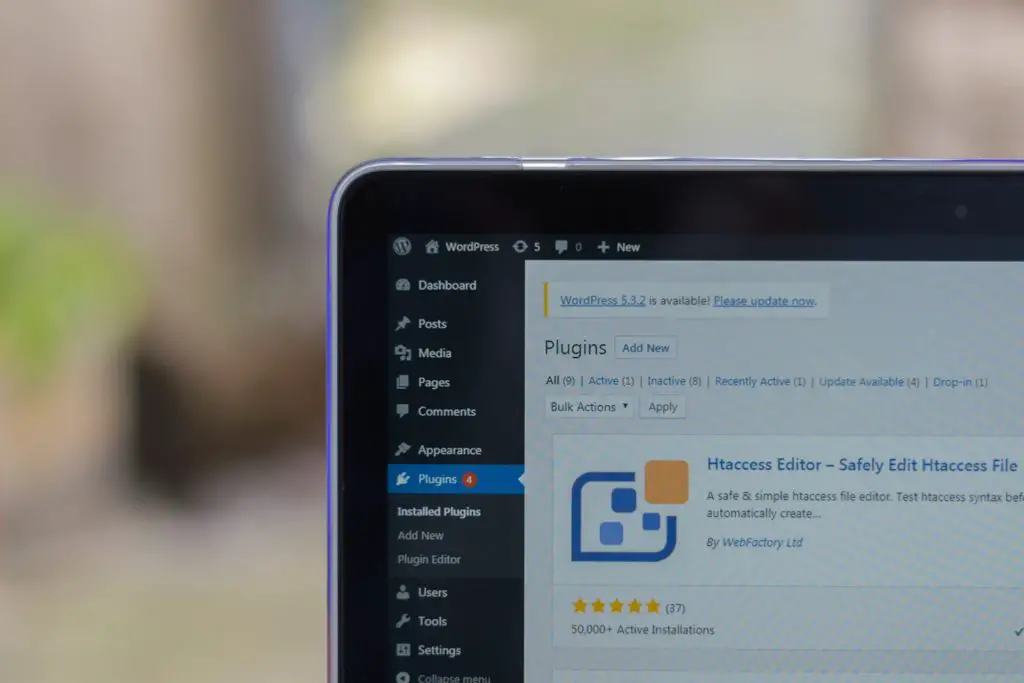Online course creation has become very popular, and many people decide to make an online course themselves.
If you’re one of them, you’re probably wondering a) how to create an online course and b) how much it will cost.
But don’t worry! Today we walk you through all the hidden costs and financial pitfalls of online course development.
How much does it cost to create an online course?
First, we’ll start with a disclaimer. If you wonder how much is the cost to produce an online course, you need to take certain aspects into consideration. Online course creation costs vary depending on various factors, such as:
- your niche
- your course topic
- type of content you’re using (videos, visuals, etc.)
- course length
- the level of professionalism of your course
- the amount of time you’re willing to dedicate
- how much equipment do you need
- how many people do you need for help
- do you need any paid resources for your research
With these factors in mind, you can easily make an online course for free. But you can also make a full-blown production for thousands of dollars.
Competition is the main thing to consider when deciding how much you can spend on creating online courses.
If your niche or course topic is highly competitive, you’ll need high-quality content, from course materials to video production. Remember that people have YouTube, and if your topic is highly competitive, chances are they can find what they’re looking for there.
If you find a niche with a demand that is undiscovered by course creators, you can easily record an online course with your phone. People will still watch you as your course will be the only one available on this topic. The only condition is to make great content and provide value to your audience.

Cost of online course development
After considering all the above factors, you’re still bound on launching an online course we walk you through all the costs involved in online course creation.
Course Materials
In the preparation phase of course creation, you need to plan a course curriculum and needed materials.
You’ll also have to determine if your learners can comprehend your course topic depending on their learning possibilities and technological means.
Online courses can be divided into different levels depending on their interactivity and complexity. The higher they are, the more expensive a course tends to be.
On the one side of the spectrum, you have course content that includes PowerPoint presentations, simple video, audio, graphics, and simple quizzes.
The style of information presented here is simple, straightforward, and non-interactive. Course content focuses on delivering information in a text and image design that does not employ games or simulation.
On the opposite side of the spectrum, you have a course that encourages learners to interact fully and give feedback. Simulations, characters, simulated job performance exercises, customized audio and video, storytelling, and scenarios are included in the course content.
It’s a more expensive, higher-end production that includes complex, more costly, and time-consuming interactive features.
When creating your course curriculum, think carefully about the materials you’ll use so that they meet your learners’ demands and skills.
Also, think about how interactive you want it to be. For example, some platforms include active elements such as ebooks and video lectures, tasks, polls, and other activities.
You can use these tools to design highly engaging courses without spending a lot of time designing and editing them ahead of time.
DIY
Online course platforms can help you develop an entire course by yourself for a low cost. For example, LearnWorlds starts at just $24 a month, and Thinkfic costs $39 a month.
Developing infographics and visuals can be easily done in Canva for free or with a premium package of $100 a year.
Outsourcing
However, if you decide to outsource the creation of the materials, it’s also an option.
Designing infographics, practical tasks, quizzes, and tests would take an expert or an educator and instructional designer. Their hourly rate would oscillate around $20-$50.
Content Creation
This is the part where costs vary drastically. Total content creation costs depend on how long and in-depth you want your course to be.
It also depends on how much work you want to put into it and your available resources.
The following three scenarios show the possible content creation costs for an online course:
1. You could create the entire course by yourself, which would be free or very cheap.
2. You could outsource some of the content creation, which would be more expensive.
3. You could use a course authoring tool that provides ready-made content, which would be the most expensive option.
The first scenario is the cheapest but also the most time-consuming. Therefore, it’s only recommended if you’re an expert on the topic and have ample experience with instructional design.
The second scenario is more expensive but will save you time. This option is recommended if you’re not an expert on the topic but have some knowledge about it.
You could also outsource the entire course creation process to an agency, which would be even more expensive.
The third scenario is the most expensive but quickest and easiest way to create an online course.
It’s recommended if you want to create a high-quality course but don’t have the time or knowledge to do it yourself.

Equipment
Online course creation equipment doesn’t have to be expensive. You probably already have most, if not all, of the necessary equipment.
You’ll need a computer with an internet connection and a word processing program like Microsoft Word or Google Docs.
Next, search for multimedia software to make your course development process easy and affordable. If you want to record online course videos, you can easily do this with your phone camera.
You’ll need dependable video editing software if you’re producing films, screencasts, webinars, or podcasts. You can use a video editor like Camtasia, Screen-O-Matic, Adobe Premiere Pro, and other similar tools.
The cost of online course development at this stage would oscillate from around 300$ to $1200.
Also, remember to acquire a microphone, video camera, and lighting kit that will help you make professional videos.
If you want to hire someone to record an online course for you, it’s also possible. You will need someone to record and edit your course videos. A video creator would cost $50-$100 an hour, and a graphic designer would cost at least $70 an hour.
Tools and editing software
We mentioned some tools and platforms you can use for online course development above however here’s a more comprehensive list:
1. WordPress
2. Udemy
3. LearnWorlds
4. Teachable
5. Thinkific
6. Kajabi
7. Podia
8. Ruzuku
9. Adobe Creative Suite
10. Microsoft Office Suite
These are just some of the platforms and software you can use to develop an online course.
The costs of using these platforms and software vary. Some are free, like WordPress, and some are paid, like Adobe Creative Suite. Some platforms help only with online course content creation, and some are all-in-one platforms that help you sell and promote your course.
The prices of the paid platforms and software also vary. For example, LearnWorlds starts at just $19/month, while Adobe Creative Suite starts at $49.99/month.
The cost of online course development using these platforms and software would be around $100-$500/month.
Online course hosting
The next important part of online course development is choosing the learning management system (LMS) so make sure you pick one that meets most of your needs in terms of features.
You may evaluate several learning management systems, but be sure it won’t take up too much of your time.
Prepare for it and read reviews, so you know what to expect. Then, once you’ve decided, start building your institution – develop your landing page and upload your course.
It’s also possible to set up and create your pages and content for a virtual school with a few clicks of the mouse. However, suppose you are not confident about even basic technological concepts and want to pay someone to create your online course for you. In that case, this may be an additional expense. Hiring a professional would cost around 35$ an hour.
If you’re on a budget, it’s important to find out how much your LMS will cost. Then, choose an LMS that can link with your existing WordPress site if you already have one.

Landing Page
To fully develop an online course, you need a landing page.
If you want to try and do it yourself, you can use WordPress or any other site builder. In addition, many online course platforms allow you to create a landing page as a part of their features. So if you want to save money, here’s where you can do this.
Of course, if you want a more professional-looking page, you’ll need to spend more. Hiring a graphic designer is generally a good idea for online course development. They can work on any visuals and graphics and take care of your landing page.
Generally, creating a landing page from scratch would cost about $500 if you decide to hire someone.
Domain Name
Creating online courses isn’t truly fulfilled if you don’t have your own website. You don’t need to have separate websites if you have several online courses, however, it’s important you give your prospective students easy access to your learning programs.
The costs of registering a domain name for your business may range from $10 per year to $100,000 or more, depending on your domain name.
However, using an old domain name like good old wine is usually pricey, and there is always the choice of creating a new one.
Student Support
Every product or service should have customer support. That’s what student support in the online course industry is.
If you haven’t done this yet, you should think about how you will handle student inquiries and when you will be available to talk to them.
You have the choice of providing on-call assistance and letting them know ahead of time what your working hours are so that you may answer inquiries and provide adequate feedback. Note that costs for this sort of communication should also be added.
Call quality varies by country, and the rates will differ based on your calling plan. For example, a paid subscription for Skype or Zoom costs between $2.95 and $14.99 per month in various countries.
Also, consider how much time you are willing to dedicate to your students. It all depends on how many students you have and how many hours they need to complete the curriculum each day. If you have 100 students, it can take two hours every day; if you only have 50 children, it can take one hour. Remember that this is dependent on demand as well.

Marketing
After you’ve created your online course, it’s time to market and promote it. The costs of marketing and advertising an online course can be significant, but it’s important to reach your target audience.
Digital marketing is vital for any business in today’s world. However, the cost of hiring a digital marketing agency will depend on your business size, budget, and goals.
It also comes in handy if you want to presell your online course.
To lay it out for you, the average cost for a small business to hire a digital marketing agency is $2000-$5000 per month.
The cost of social media advertising varies depending on your business’s size and goals. For example, if you’re a small business and want to run a social media ad campaign for one month, it could cost you $500-$1000.
Paid Ads
Paid ads are a quick and easy way to get traffic to your page. However, you should carefully craft a budget for advertising and include a spending limit.
If you’ve done sponsored advertising before, this is a fast method to get people to your course or hire an agency. Of course, the quality and price of your course determine the cost of a lead, but they can start at around $100 plus your advertising budget.
Email Marketing
You’ll need to create an email list once you have an audience. Creating an email marketing strategy to distribute your courses is simple and straightforward. The cost of top-rated email builders varies, but the most beneficial are those that make it simple to design unique email content most quickly and easily possible. Make sure to check how much they cost before making a decision.
Social Media
Facebook Ads are another type of paid ads and come in handy if you don’t have a big following on Facebook. Consider investing in it to further promote your online course.
Next, turn on your YouTube, Instagram, LinkedIn, Twitter, and Pinterest accounts and begin advertising campaigns for as little as $1 per day in impressions. To learn more about pricing for advertising, go to WebFx and see what information is available for each platform and how they operate.
Blog
Providing educational content and advice through blogging can attract more people and encourage them to visit your school. You can also use the help of agencies or freelancers. They can take care of content creation, content distribution, and SEO.
Affiliate Programs
Another type of marketing that might be worth considering is affiliate marketing.
With affiliates, you have no upfront costs. Instead, you just owe them a commission when they have referred you to a paying customer – a person who has enrolled and paid for your course.
Many online course platforms provide an affiliate program tool integrated into your course. It helps to simplify the process – affiliate registration, commission settings, management, and reporting are all under one roof. Such platforms can save you from $39 up to $499 per month on using other affiliate management systems.
Then there are affiliate fees to consider. Each affiliate will be paid a piece of the sale. While affiliate fees work the same way on advertisements, costs may accumulate with partners taking a big bite out of your earnings.

Hidden Costs
While the development and marketing of your online course are the two main aspects that will cost you money, there are also some costs that you need to be aware of.
First, if you’re using a course platform, fees may be associated with payments, transaction charges, or VAT. So be sure to check with your chosen platform to see what, if any, additional costs there may be.
Additionally, you will need to factor in the cost of hosting your online course. If you’re using a course platform, this may be included in your subscription fee. If not, you will need to factor in hosting and streaming your video content costs.
Final thoughts
Finally, don’t forget the cost of your time! Creating and marketing an online course takes significant time and effort. Make sure to factor in the opportunity cost of not working on other projects or tasks while creating and promoting your online course. It can really impact the online course’s profitability in the end.
At the end of the day, how much does it cost to develop an online course? It depends on several factors, including the type of the course you’re creating, your platform, and your chosen marketing strategy. However, with a little planning, you can create an online course that fits your budget and meets your students’ needs.
Conclusion
Online course development is a great way to share your knowledge with others and generate some extra income. However, the cost of online course development can vary depending on how you want to create it and what features you want to include.
If you’re on a tight budget, you can create the entire course by yourself or outsource some of the content creation. If you have a larger budget, you could use a course authoring tool or hire an agency to develop the course.
Keep in mind that some unexpected costs are associated with creating an online course, such as equipment, software, hosting, and marketing.
When developing your budget, make sure to factor in all of these costs to create a high-quality course without breaking the bank.
